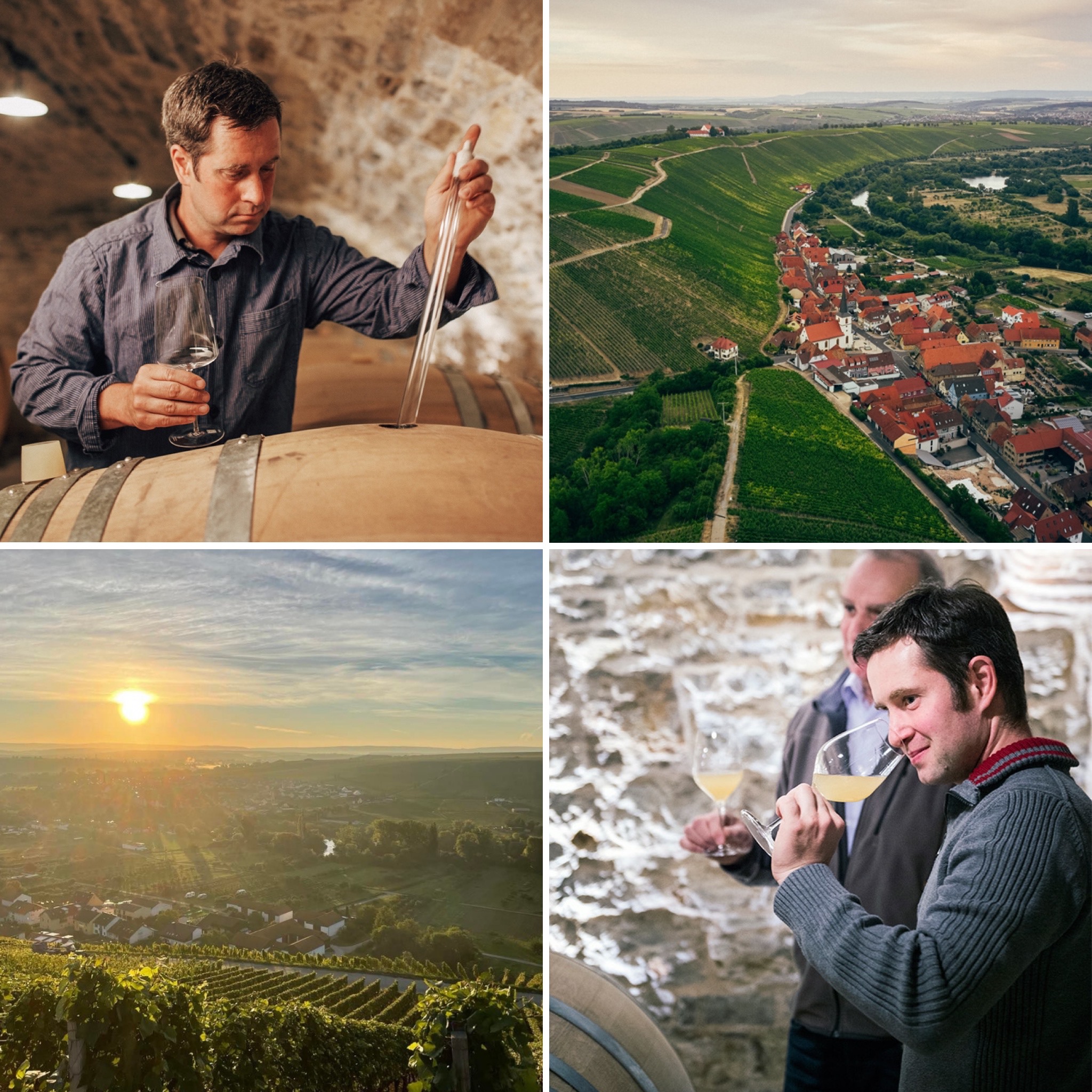Rainer Sauer: The Essence of Franken’s Silvaner and Riesling.
Weingut Rainer Sauer is situated in the village of Eschendorf, surrounded by some of the most highly regarded vineyards in Franken for Silvaner and Riesling. In this part of Franken Silvaner is king, and Rainer Sauer produces some of the finest examples.
In this article we will discover the heritage and wines of Weingut Rainer Sauer, a winery that in its turn teaches us what Franken is all about.
Franken and Silvaner, the perfect combination
When grown on the region’s dominant limestone soils, Silvaner produces restrained, mineral wines, characterized by lemon, earthy and herbal notes. Especially with residual sugar below 4 grams per liter, Silvaner is able to produce subtle and fresh wines, characterized by gentle, round acidity and fresh herbs.
When planted in the best vineyards with southern exposures and poor limestone soils, Silvaner can also yield a very concentrated style, but still with the signature elegance and a certain earthy, herbal note to them. Apart from plantings in Franken, Silvaner is found in the Rheinhessen and Pfalz regions of Germany, the Alsace in France, and in Alto Adige in Italy. Roughly 5,000 hectares of Silvaner are planted worldwide.
Weingut Rainer Sauer
Rainer Sauer is a relatively young winery, being founded in 1979 by Rainer Sauer and his wife Helga. In 2010 Rainer Sauer joined the VDP (Verband Deutscher Prädikatsweingüter), the elite group of German wine producers, with the wines being classified from Gutswein (regional wine) all the way to Grosse Lage (grand cru). For more information and background on the VDP and its classification, refer to this article written by us.
As of 2015, the winery was completely renovated, laying the foundations for a new era of producing top-quality wine in Franken. As of 2021, Daniel, son of Rainer, took over the winery after having studied at Geisenheim and gaining winemaking experience in California, entering the winery into a new era.
Their house style is one of very clean winemaking, allowing the subtlety of Silvaner to speak for itself. Old oak is only used for the Erste Lage wines and above, with the Gutswein and Ortswein being all about freshness, elegance and minerality – as was evidenced by our tasting notes.
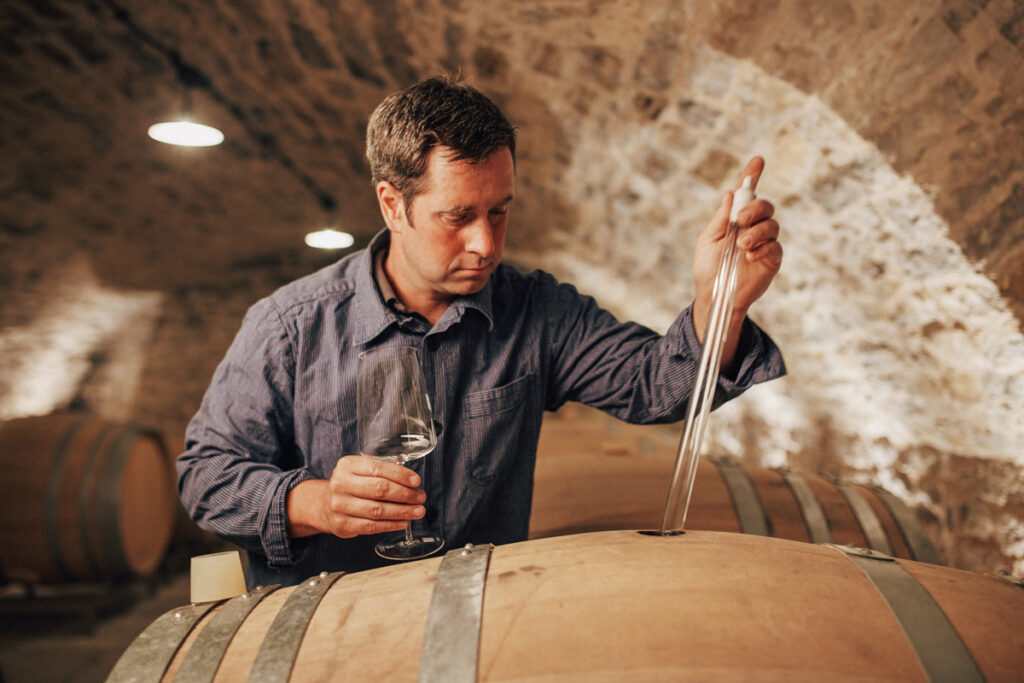
The Vineyards and Wines
The Eschendorfer Am Lumpen 1655 vineyard and corresponding Grosses Gewächs from Silvaner is their flagship wine, showcasing the paradoxical power and elegance the greatest Silvaner wines can simultaneously possess.
The Am Lumpen 1655 vineyard gets its name from the time the vineyard was first mentioned, which was in 1655 in a document regarding tax levied on wine. Almost 400 years later, the vineyard still produces wines worth mentioning due to its unique factors that give the wines such outstanding quality.
The vineyard, situated right above the village of Eschendorf and following the curve of the Main River, forms an amphitheater facing south to south-east, perfectly capturing sunlight and heat. Both the warmth of the village and the water reflecting sunlight further add to this effect, making this vineyard one of the warmer spots in the whole of Franken. Combined with its poor, limestone soils and steep slopes, this makes for perfect conditions to grow high-quality grapes.
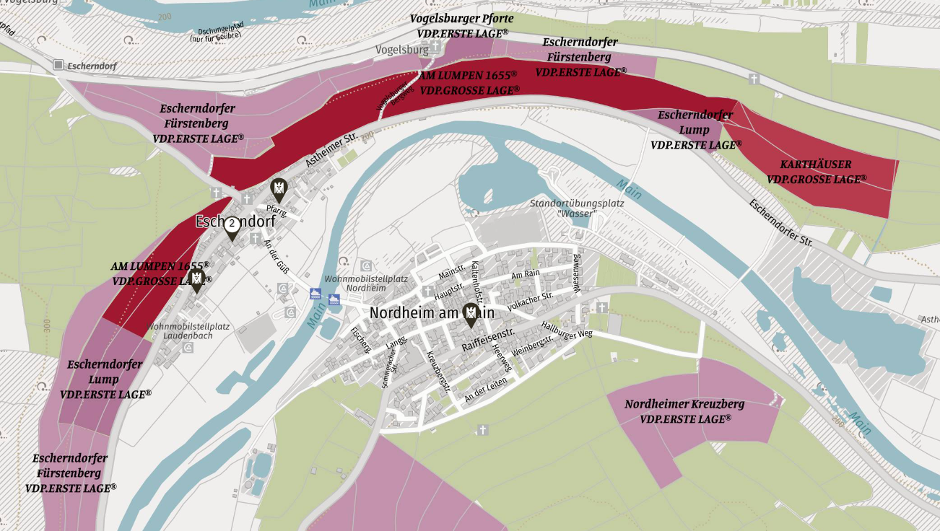
Limestone soils are especially popular for Silvaner due to their good water retention, giving Silvaner the relatively higher amount of water it naturally needs compared to more drought-resistant varieties. However, Riesling also thrives on these types of limestone soils, as is evidenced by Trimbach’s Clos Sainte Hune and many of Wittman’s and Keller’s bottlings, giving the hallmark austere minerality that Riesling grown on limestone often brings to the table, with intense acidity, power, structure and ageability.
This signature limestone touch of austerity and minerality carries through to Silvaner plantings, yielding in the case of the Am Lumpen 1655 bottling of Rainer Sauer a wine that effortlessly combines elegance and minerality with concentration and structure.
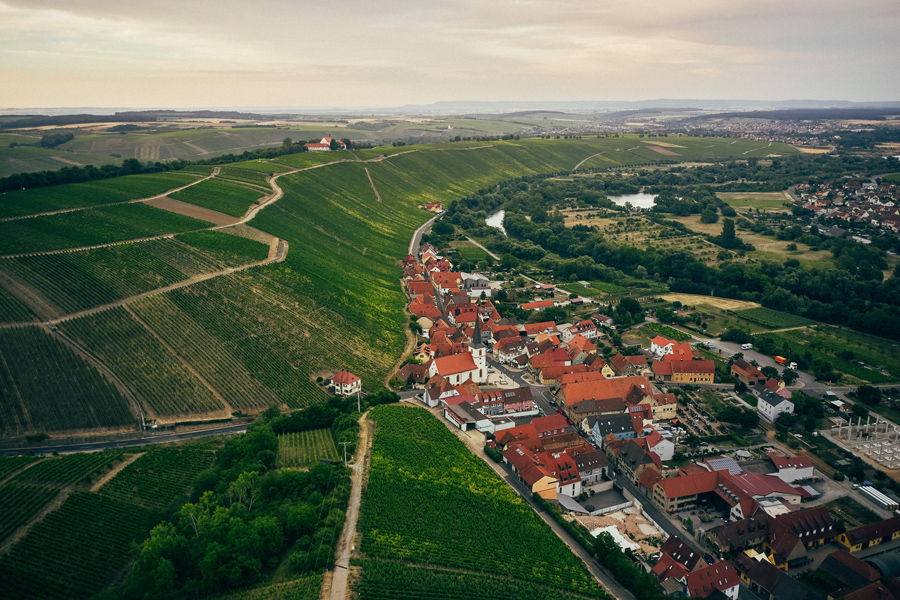
Rainer Sauer bottles both a Silvaner and Riesling from this exceptional vineyard, which we were lucky to be able to taste both. The Silvaner is planted on the lower slopes with richer, loamier soils, giving the vines the water and nutrients, they need. Riesling on the other hand thrives in poorer soils, causing it to be planted on the higher slopes, where the soils are thinner and the temperature is a bit lower. As Silvaner ripens around two weeks earlier than Riesling, planting Riesling on a cooler place ensures both varieties can be harvested within a shorter window of time, lowering costs of production.
Besides Silvaner, which accounts for over 60% of plantings of the winery, Riesling is also grown for some of Rainer Sauer’s premium bottlings. Some Müller-Thurgau, Kerner, Bacchus and Traminer is also planted for more easy-drinking, fresh white wines. Experimentation with concrete eggs is going on as seen in the Silvaner Am Lumpen 1655 ‘AB OVO’ (Latin for ‘from the egg’) bottling, and sparkling Silvaner is made too. When the vintage allows it, they also produce very rare Eiswein from Silvaner, which last occurred in 2012. Solid quality is found at all classification levels, all with a very friendly price for the quality you get in the glass. Highly recommended by us for those wanting to explore the wines of Franken, and those who love wines truly speaking of their place.
A Selection of Silvaner and Riesling
For this article we tasted and reviewed a selection of Rainer Sauer’s wines. We encountered the wines earlier this year at the Anfors portfolio tasting (read more about this here) but managed to get our hands on some wines to give them an extensive review. Below you will find our findings and ratings.
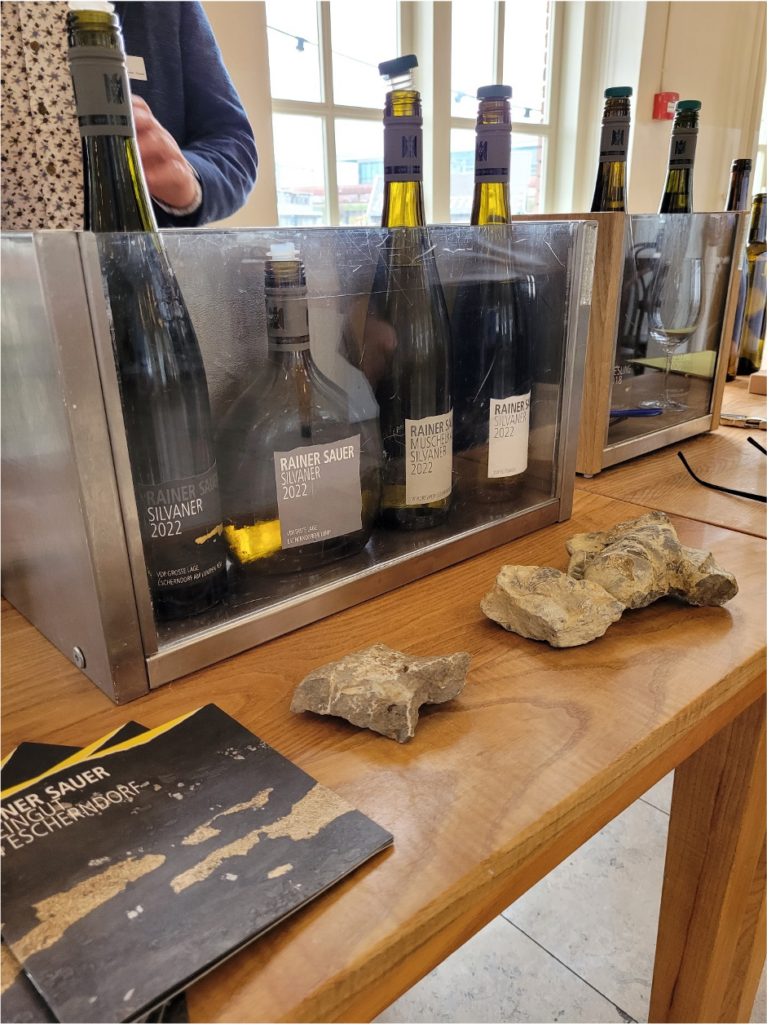
2022 Silvaner Trocken
Entry-level Silvaner of Rainer Sauer. Vinified in stainless steel, preserving the delicacy of the variety. Light body, with good acidity. Lemon, lime, green apple, and herbs. Subtle and elegant, refreshing and drinkable. Good introduction to the variety, made into an easy-drinking balanced style. Could age for a few years, but probably best when it has all its primary freshness.
We reward this Silvaner with a 87-point DWA score. Drink 2024-25.
2022 Muschelkalk Silvaner Trocken
Ortswein from Eschendorf made from young Lump (Erste Lage) and Am Lumpen 1655 (Grosse Lage) vines. Some clay and loess in the soil, giving more body and weight. Bit more expressive on the nose with more ripeness than the regular Silvaner bottling. Distinct mineral, wet stone note comes through, helped by the usage of vineyards based on soils with a higher limestone content. Lemon, ripe green pear, yellow fruit, and minerality. Firmer acidity and more intensity than the regular Silvaner. Impressive for the price.
We reward this Silvaner with a 89-point DWA score. Drink 2024-27.
2022 Eschendorfer Lump Silvaner Trocken
Erste Lage wine, made from older Lump vines grown on limestone from the village of Eschendorf. Full-bodied, helped by the aging in large old oak barrels. Very mineral and restrained, with distinctive power underneath. Aromatic. Flinty minerality, lemon, peach, lees notes, red apple, jasmine, and smoke. Quite long finish. Serious expression of Silvaner and the weightier style of wine it can produce, while still being elegant and refined. Could do with some more age.
We reward this Silvaner with a 91-point DWA score. Drink 2025-32.
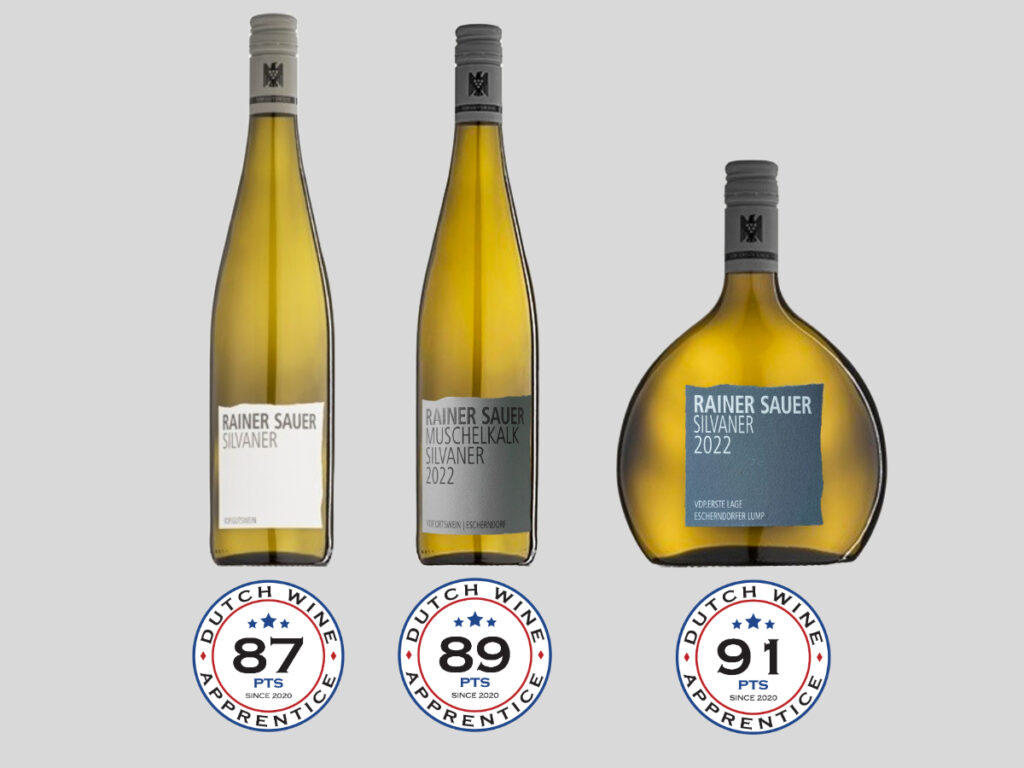
2022 Eschendorfer Am Lumpen 1655 GG Silvaner Trocken
Top wine of Rainer Sauer, from the Am Lumpen 1655 Grosse Lage. Very mineral and smoky nose, still quite closed. Pronounced intensity. Dense palate, helped by aging in old oak and long lees aging, showing salty minerality, grass, herbs, bread dough, lemon rind, ripe pear, peach, red apple, earthiness and white flowers. Very concentrated, with high acidity giving structure and balancing the full body and fruit intensity of the wine. Benchmark Silvaner from Franken, perfectly showcasing the potential of the variety to make dense, weighty, earthy wines that still possess so much freshness. Opens up with time in the glass, indicating a very long live ahead of it. Great price-quality ratio.
We reward this Silvaner with a 94-point DWA score. Drink 2027-42.
2020 Eschendorfer Am Lumpen 1655 Riesling GG Trocken
Riesling planted in the Am Lumpen vineyard on the steeper and shallower parts, ensuring massive concentration and austere minerality due to the limestone soils. The wine is just starting to open up, showing intense lemon, lime, grapefruit, smoke and minerality. The wine was aged in old oak casks with some skin contact, giving slight tannins. Higher acidity than the corresponding Silvaner bottling, integrated by the fuller body of the wine due to lees aging and the intensity of the fruit. Long finish. Very harmonious and balanced, while also being intense and linear. Lightning in a bottle.
We reward this Riesling with a 94-point DWA score. Drink 2025-45.
2018 Eschendorfer Am Lumpen 1655 Riesling GG Trocken
Similar profile to the 2020 bottling, albeit with a bit more roundness and ripeness, moving into peach and fresh apricot notes, while retaining the signature citrus freshness and minerality of the vineyard. Hint of petrol adding some complexity, but not overpowering the elegance of the wine at all. Whereas some Riesling wines from 2018 in Germany are a bit too ripe and lacking acidity, in the cooler region of Franken ripe wines were produced, but still with a solid acid structure, balancing the slightly richer fruit profiles.
We reward this Riesling with a 93-point DWA score. Drink 2024-38.
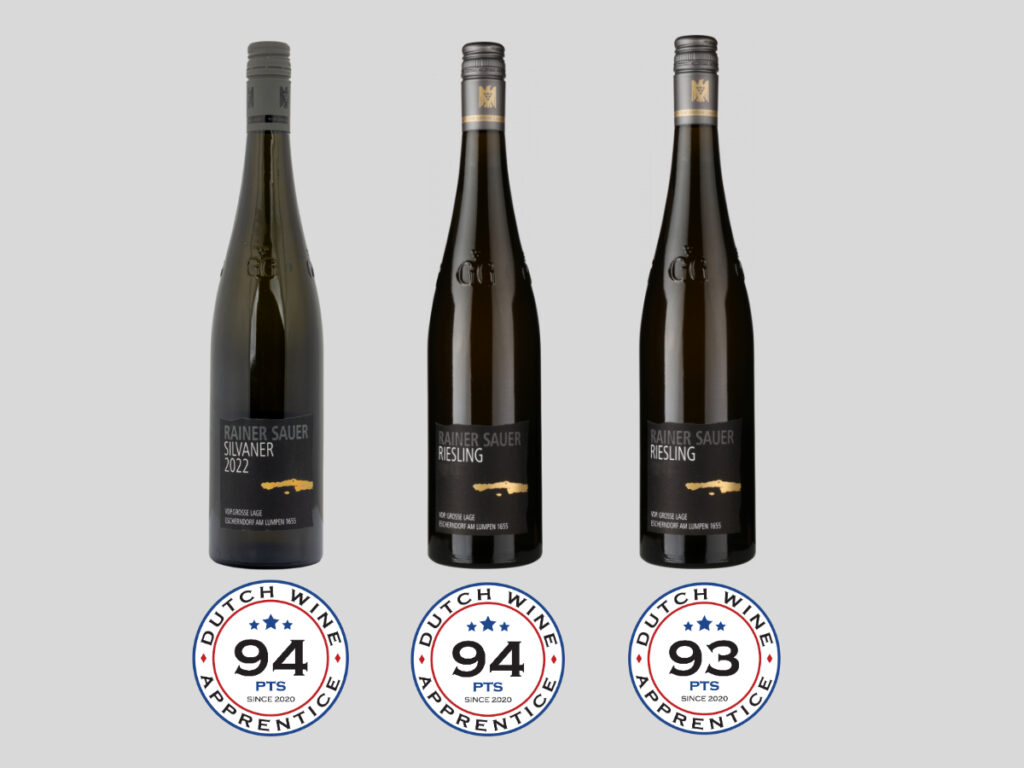
Rainer Sauer: Benchmark Wines with Exceptional Value
To conclude, we look back on a tasting a great range of wines of Rainer Sauer. The wines tasted showed great typicity and were benchmarks for their region, with the entry-level Silvaner being fresh and light-weight, and the higher VDP classifications moving into more weighty, structured wines, capable of aging for decades. The Rieslings produced are not to be overlooked too, provided classic Riesling minerality and acidity, even more so in cooler years. Especially notable was that all wines have very fair prices, with all wines providing a very strong price-quality ratio.
Want to grab some for your own? Head to the website of Anfors Imperial while they are still available.
This article is written by our own Martin Bronkhorst. The wines of Rainer Sauer are exported to a number of foreign markets and well distributed. In the Netherlands their wines can be bought through Anfors Imperial. Additionally, the wines can be bought directly at the estate. We would like to thank the team of Anfors Imperial for providing the wines tasted.

